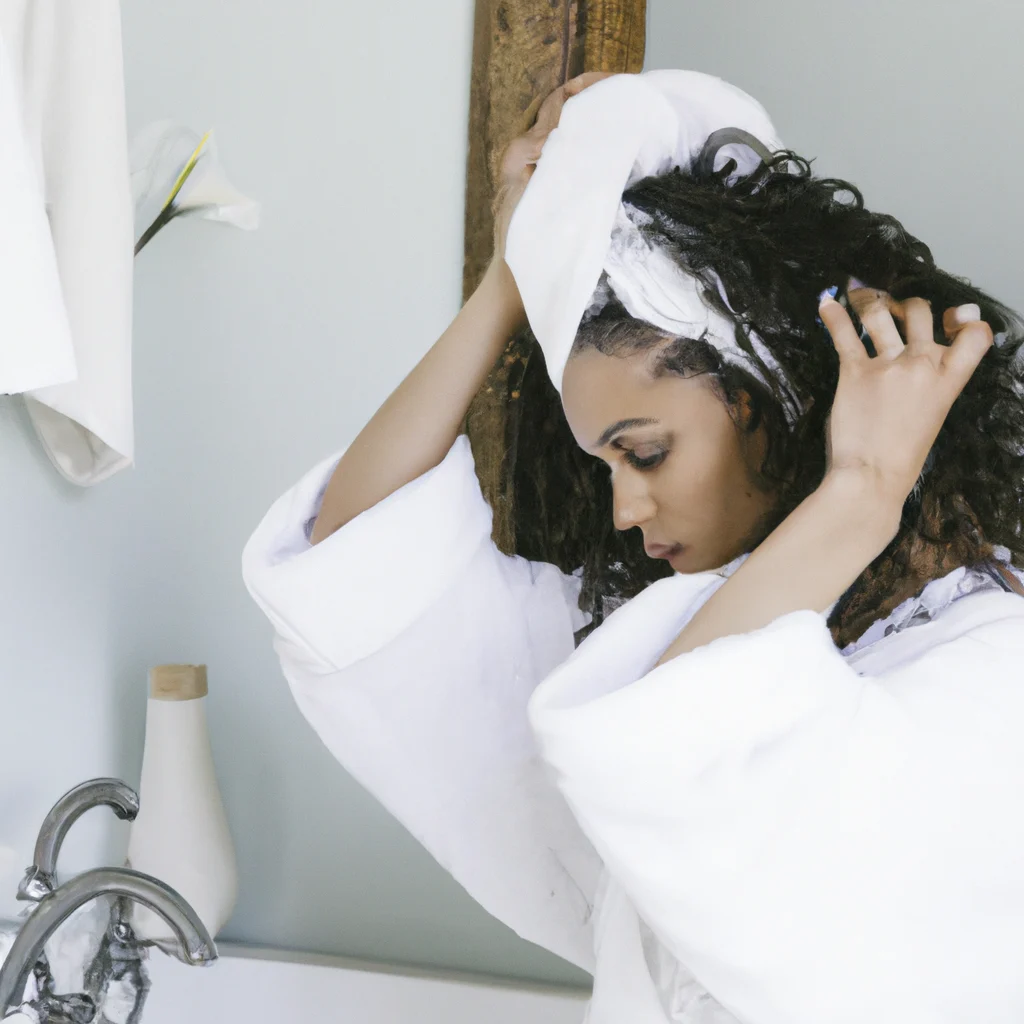Frizzy hair can be a significant challenge, especially after showering. Many individuals find themselves frustrated by the unpredictable nature of their locks, which can often resemble a frizz-ball rather than the sleek, smooth hair they desire. In this comprehensive guide, we aim to provide you with effective strategies to tame frizzy hair after showering, ensuring that you achieve the look you want.
Understanding Frizzy Hair
To effectively combat frizz, it is essential first to understand what causes it. Frizzy hair typically results from a lack of moisture, which leads to the hair’s cuticles rising and creating a rough surface. This often occurs due to environmental factors, hair care habits, and even genetics. Identifying the root cause of your frizz will help tailor your approach to managing it.
Choosing the Right Shampoo and Conditioner
Using the appropriate shampoo and conditioner is vital in managing frizz. Look for products specifically formulated for frizzy or curly hair. These products often contain moisturizing agents that help to keep the hair’s moisture balance intact. Ingredients like argan oil, shea butter, and glycerin are particularly effective in smoothing hair and reducing frizz.
Shampooing Techniques
When shampooing, focus on the scalp rather than the ends of your hair. Gently massage the shampoo into your scalp to remove dirt and oil without stripping moisture from the lengths of your hair. Rinse thoroughly and follow up with a generous amount of conditioner.
Conditioning for Moisture
After shampooing, apply conditioner to the mid-lengths and ends of your hair. Allow the conditioner to sit for a few minutes to maximize hydration. For an added boost, consider using a deep conditioning treatment once a week to replenish moisture levels.
The Importance of Hair Drying Techniques
The method you use to dry your hair can significantly impact its frizz levels. Rubbing hair vigorously with a towel can create friction and lead to more frizz. Instead, consider the following techniques:
Microfiber Towels
Using a microfiber towel is a gentle way to absorb excess water without causing friction. Simply wrap your hair in the towel and allow it to absorb moisture for several minutes.
Air Drying vs. Blow Drying
If possible, allow your hair to air dry. If you must use a blow dryer, consider using a diffuser attachment and a low heat setting. This helps to minimize heat damage and reduce frizz.
Styling Products to Tame Frizz
Incorporating the right styling products can make a significant difference in controlling frizz. Look for products that offer hold and moisture without weighing your hair down.
Leave-In Conditioners
Leave-in conditioners provide continuous moisture and can help tame frizz throughout the day. Apply a small amount to damp hair, focusing on the ends.
Serums and Oils
Hair serums and oils can provide a protective layer over the hair cuticles, preventing moisture loss. Apply a few drops of serum or oil to the palms and work it through the hair, avoiding the roots to prevent greasiness.
Heat Protection and Styling Tools
When using heat styling tools, it is crucial to protect your hair from damage. Always apply a heat protectant spray before using flat irons, curling wands, or blow dryers. This creates a barrier between your hair and the high temperatures, reducing the chances of frizz caused by heat damage.
Regular Hair Trims
Regular trims are essential for maintaining healthy hair and controlling frizz. Split ends can contribute to an unkempt appearance and exacerbate frizz. Aim to trim your hair every six to eight weeks to keep it looking its best.
Environmental Factors
Environmental elements such as humidity can drastically affect your hair’s frizz levels. During humid weather, the moisture in the air can cause hair to swell and frizz. To combat this, consider the following tips:
Humidity-Proof Products
Use humidity-resistant hair products that provide a barrier against moisture. Look for styling products labeled as ‘humidity resistant’ or ‘anti-frizz’ to help maintain your style despite weather conditions.
Protective Hairstyles
Opt for protective hairstyles during particularly humid days. Braids, buns, or twists can keep your hair secured and minimize exposure to humidity, reducing the chances of frizz.
The Role of Diet and Hydration
What you consume can also impact the health of your hair. A well-balanced diet rich in vitamins and minerals promotes healthy hair. Additionally, staying hydrated is crucial for maintaining moisture levels in your hair and skin. Aim for a diet with plenty of fruits, vegetables, and healthy fats to nourish your hair from the inside out.
Consulting with Professionals
If frizz remains a persistent issue despite your best efforts, consider consulting with a professional hairstylist. They can assess your hair type and recommend tailored products and treatments that may work best for you.
Conclusion
Taming frizzy hair after showering requires a combination of the right products, techniques, and care. By implementing the strategies outlined above, you can achieve smoother, more manageable hair. For those seeking additional tips and products tailored to your lifestyle, visit Nivax Lifestyle.


